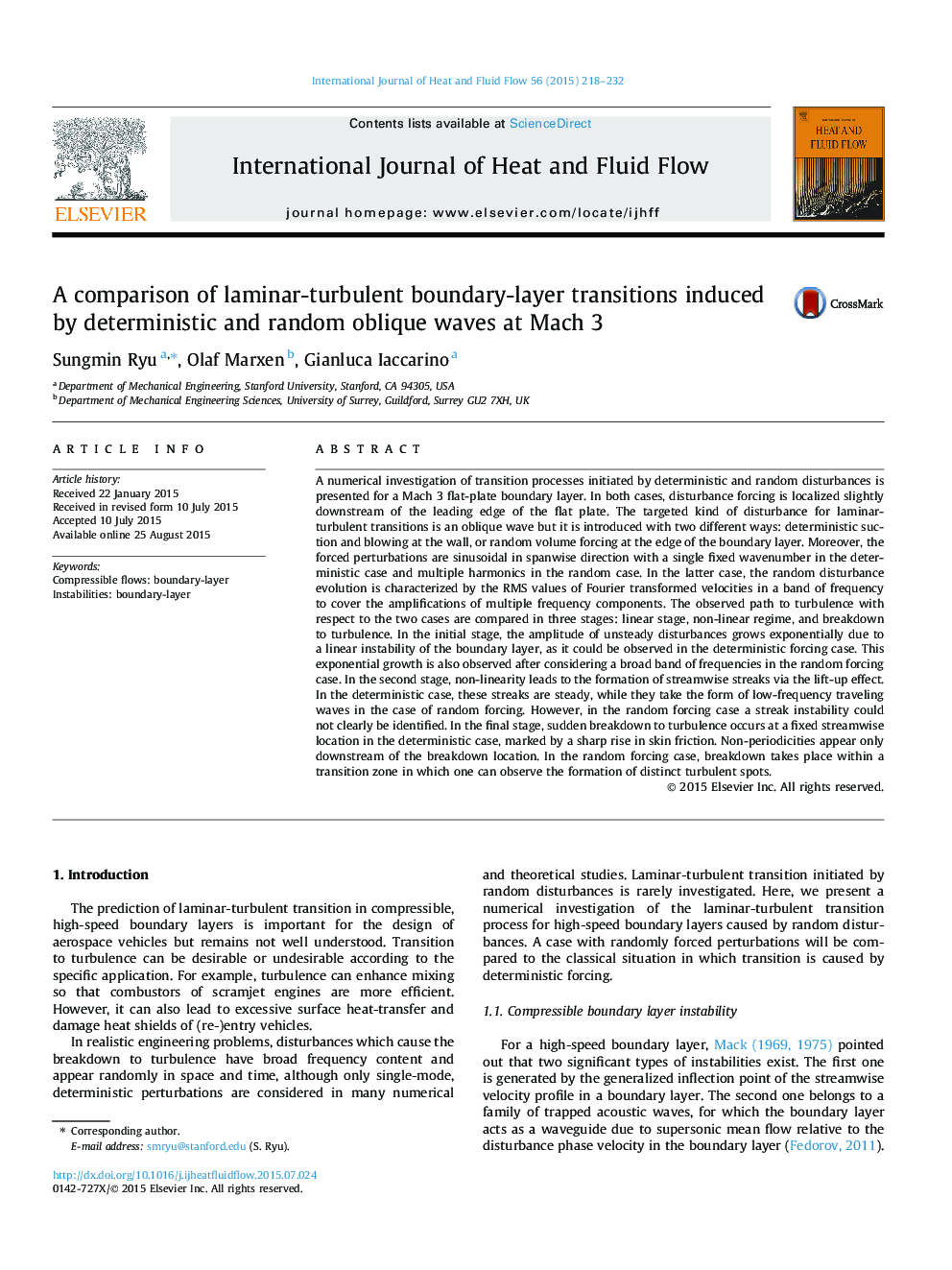| کد مقاله | کد نشریه | سال انتشار | مقاله انگلیسی | نسخه تمام متن |
|---|---|---|---|---|
| 654997 | 1457625 | 2015 | 15 صفحه PDF | دانلود رایگان |
عنوان انگلیسی مقاله ISI
A comparison of laminar-turbulent boundary-layer transitions induced by deterministic and random oblique waves at Mach 3
ترجمه فارسی عنوان
مقایسه لرزان-لرزه ای با گذرهای مرز لایه ای ناشی از امواج ماتریس قطعی و تصادفی در 3 ماخ
دانلود مقاله + سفارش ترجمه
دانلود مقاله ISI انگلیسی
رایگان برای ایرانیان
کلمات کلیدی
جریان فشرده: لایه مرزی، عدم ثبات: لایه مرزی،
موضوعات مرتبط
مهندسی و علوم پایه
مهندسی شیمی
جریان سیال و فرایندهای انتقال
چکیده انگلیسی
A numerical investigation of transition processes initiated by deterministic and random disturbances is presented for a Mach 3 flat-plate boundary layer. In both cases, disturbance forcing is localized slightly downstream of the leading edge of the flat plate. The targeted kind of disturbance for laminar-turbulent transitions is an oblique wave but it is introduced with two different ways: deterministic suction and blowing at the wall, or random volume forcing at the edge of the boundary layer. Moreover, the forced perturbations are sinusoidal in spanwise direction with a single fixed wavenumber in the deterministic case and multiple harmonics in the random case. In the latter case, the random disturbance evolution is characterized by the RMS values of Fourier transformed velocities in a band of frequency to cover the amplifications of multiple frequency components. The observed path to turbulence with respect to the two cases are compared in three stages: linear stage, non-linear regime, and breakdown to turbulence. In the initial stage, the amplitude of unsteady disturbances grows exponentially due to a linear instability of the boundary layer, as it could be observed in the deterministic forcing case. This exponential growth is also observed after considering a broad band of frequencies in the random forcing case. In the second stage, non-linearity leads to the formation of streamwise streaks via the lift-up effect. In the deterministic case, these streaks are steady, while they take the form of low-frequency traveling waves in the case of random forcing. However, in the random forcing case a streak instability could not clearly be identified. In the final stage, sudden breakdown to turbulence occurs at a fixed streamwise location in the deterministic case, marked by a sharp rise in skin friction. Non-periodicities appear only downstream of the breakdown location. In the random forcing case, breakdown takes place within a transition zone in which one can observe the formation of distinct turbulent spots.
ناشر
Database: Elsevier - ScienceDirect (ساینس دایرکت)
Journal: International Journal of Heat and Fluid Flow - Volume 56, December 2015, Pages 218-232
Journal: International Journal of Heat and Fluid Flow - Volume 56, December 2015, Pages 218-232
نویسندگان
Sungmin Ryu, Olaf Marxen, Gianluca Iaccarino,
